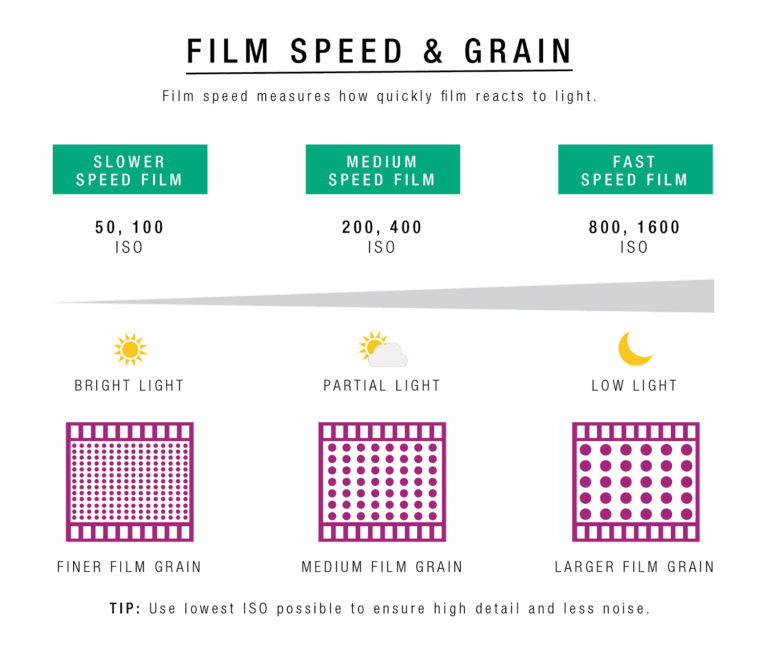This film tip comes from Fujifilm and explores the relationship between film speed (ISO) and the appearance of grain:
Film "grain" is the visible appearance of the silver halide particles within the exposed emulsion of processed film. The amount of grain and size of grain are both optical effects that depend on the film stock and distance of observation (how much the image is magnified when printing or viewing on a monitor). The size of silver halide grains varies in film stocks. Larger grains of silver halide give film a greater sensitivity to light, and are used in higher-speed films (such as ISO 400 and above). Fine-grain films are generally slower speed, meaning they are less sensitive to light and require more exposure time or brighter light than faster speed films that produce more visible grain in images. Resolution is generally similar to the idea of "sharpness" and depends on both the size of film grain, and the quality of lenses used. Film resolution is not the same as digital camera resolution. Good lenses are able to discern very fine details without distortion, and are measured by using parallel lines that get closer and closer together to see at what point the lines merge together. But the size of film grain also affects how finely the final image can discern details. Large grains (crystals) will not be able to reproduce fine details as well as small grains, so if detail is most important, you should use slower speed films. Manufacturers usually publish test data about resolution in the form of "MTF curves."
